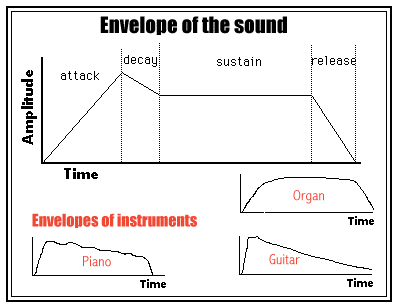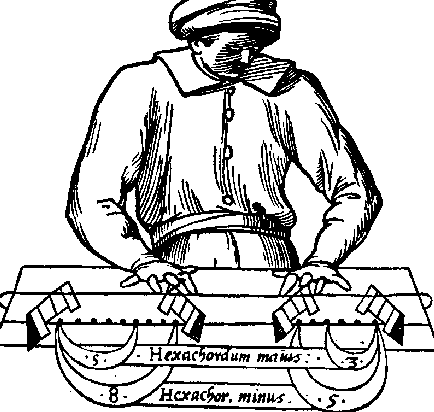Basics of SoundWhat is sound?
Sound waves that are not regular and periodical are usually perceived as noise. By contrast, a steady frequency of sound-waves creates a set pitch.
The production of musical soundsWoodwinds and brass - operate on a column of air, which, according to its changing length (set by pressing the holes or valves) produces different pitches of sound, for a long column of air generates low frequency sound waves, whereas a shorter column of air generates higher frequency sound waves. The organ also operates on the same principle of the air column. Percussion - by beating different materials we produce sounds of varying pitch - according to the size of the membrane and the material of which it is made. Drums, the piano, and all sorts of xylophones work on the principle of beating against a body. Fretted - here we use a principle similar to that of the air column, but by pressing a string (of a guitar, a violin and so on) we shorten it to different lengths. The shorter the string - the higher its pitch, for sound wave frequency will be higher.
PitchA sound's pitch, therefore, can be examined by its wave form. The more sound waves per second - the higher the pitch.

 The AmplitudeNow, when we know the reason for sound pitch (the higher the frequency of sound waves - meaning a greater number of sound waves per time unit), let us learn the reason for the fact there are stronger and weaker sounds. A sound source whose vibrations are longer (a string we plucked powerfully or a strong blow into a woodwind instrument) will sound stronger. The bigger the distance between the peak and low point of the sound wave is, the stronger the sound. The scientific term is amplitude.
In music, we call controlling the intensity of playing "dynamics". It is an important component in the musical performance. Among other things, the conductor guides the players on how to play the dynamics of a musical work
Timbre and overtonesHave you ever asked yourselves why different instruments sound different? How do you distinguish the sound of a guitar from that of a mandolin or a piano? The answer is that, in addition to the basic wave an instrument produces, it also makes many overtones, created because of the compound of the materials of which it consists. These are additional sounds, built on the basic sound. The relative volume of each one has an impact on the instrument's sound timber.
An instrument's timber is affected by various factors, such as the type of material which the instruments is made of: There are metal or brass instruments, such as the trumpet and the tuba, stringed instruments made of wood, like the guitar and violin, instruments made of leather like drums, and so on.
The regularity of sound pitchThe production of different pitches from a chord has mathematical logic, discovered by the ancient Greek philosopher Pythagoras, in the 6th century B.C. Pythagoras, who was also involved in music theory, found out that between sounds of various heights there are mathematical ratios, which also affect how well they sound together (pure intervals and consonants, and, on the other hand - dissonances - "discordant" intervals, which in certain eras were banned in religious music. Pythagoras showed the rules he discovered, by pressing the chord at different points: By dividing a string in half (that is pressing its center - exactly in the middle) - you get a pitch an octave higher than the original sound. By dividing it in three - you hear in each section of the string a note an octave and a perfect fifth higher. By dividing it into quarters - a note two octaves higher than the original. By dividing into five - a note two octaves and a major third higher than the original.
|






